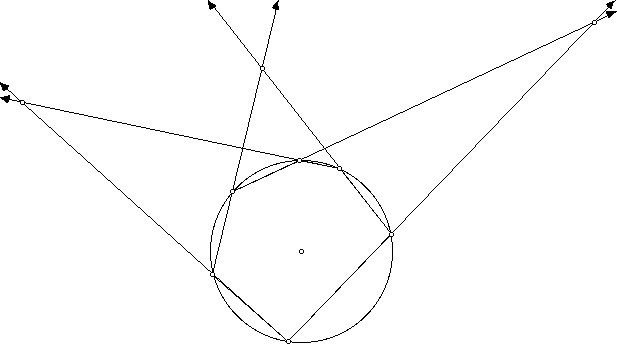Part I: Sketch tracing P as A moves (see end of Part I) and a
sketch of a tangent to to a circle through an external point.
Part II: Sketch tracing m as the lines containing O1 and O2 move
(see end of Part II) and a sketch of an external tangent to two
circles.
Part III: Sketch of the three pairs of external tangents to three
circles. This should illustrate Monge's Theorem, as in 3.5.
Part IV: Sketch of dilating a polygon by marked ratio.
Part IV: Sketch of the composition of two dilations.
Given four points A, A', B, and B', does there exist a dilation such that A' is the image of A and B' is the image of B? If not, what are conditions for such a dilation to exist? Is such a dilation unique? Explain.
When are two circles related by a dilation? Is such a dilation unique? Relate this to Part II.
General Sketchpad questions related to Monge's Theorem.

![[HOME]](/pix/home.gif) The Geometry Center Home Page
The Geometry Center Home Page